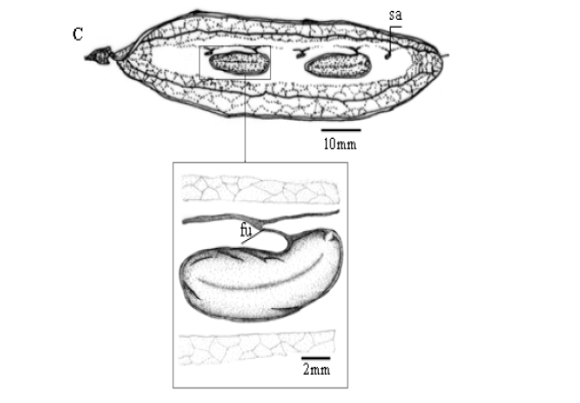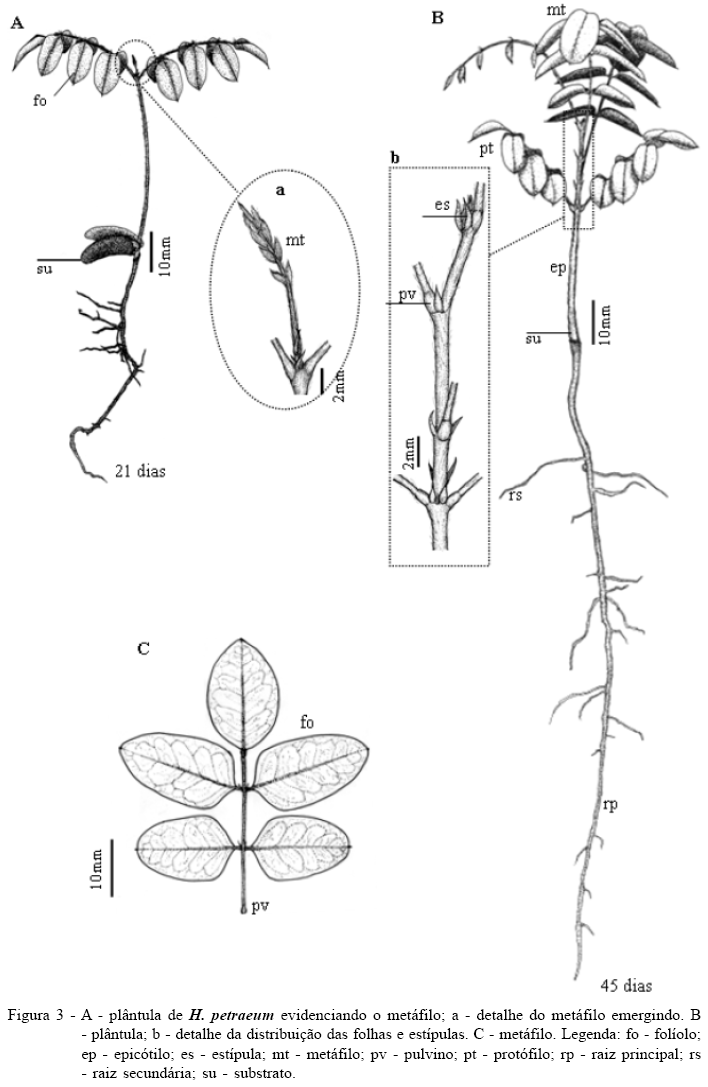Hymenolobium petraeum Ducke is a tree belonging to the family Leguminosae popularly known angelim-pedra. Possesses high commercial value, with wood widely used in construction and carpentry. The objective of the present work was to describe morphologically the fruit, the seed and the post-seminal development and to determine the cardinal temperatures for germination of angelim-pedra seeds. The length, width and dry mass of fruits and seeds were measured. For the germination tests, three repetitions of 50 seeds were placed in Petri dishes, in germination chambers at the temperatures of 15, 20, 25, 30, 35 and 40°C and 12 hours photoperiod. The fruits are samaroid-legumes, indehiscent, oblong, unicarpelate. The seeds are chestnut-dark, oblong, stenospermic, unalbuminous and with inconspicuous plumule. The primary root is white and pubescent near to the col; the shoot seedlings possess white pilosity and compound pinnate protophylum with opposite phyllotaxis, epicotyls green, erect, cylindrical and pilose, pinnate metaphylls with spiral pattern phyllotaxis. The germination is hypogeal cryptocotilar. The maximum germination temperature are above 35°C and the minimum below 15°C, while, the optimum temperature for germination of the seed is between 25 and 35°C.
angelim-pedra; arboreal species; cardinal temperature







